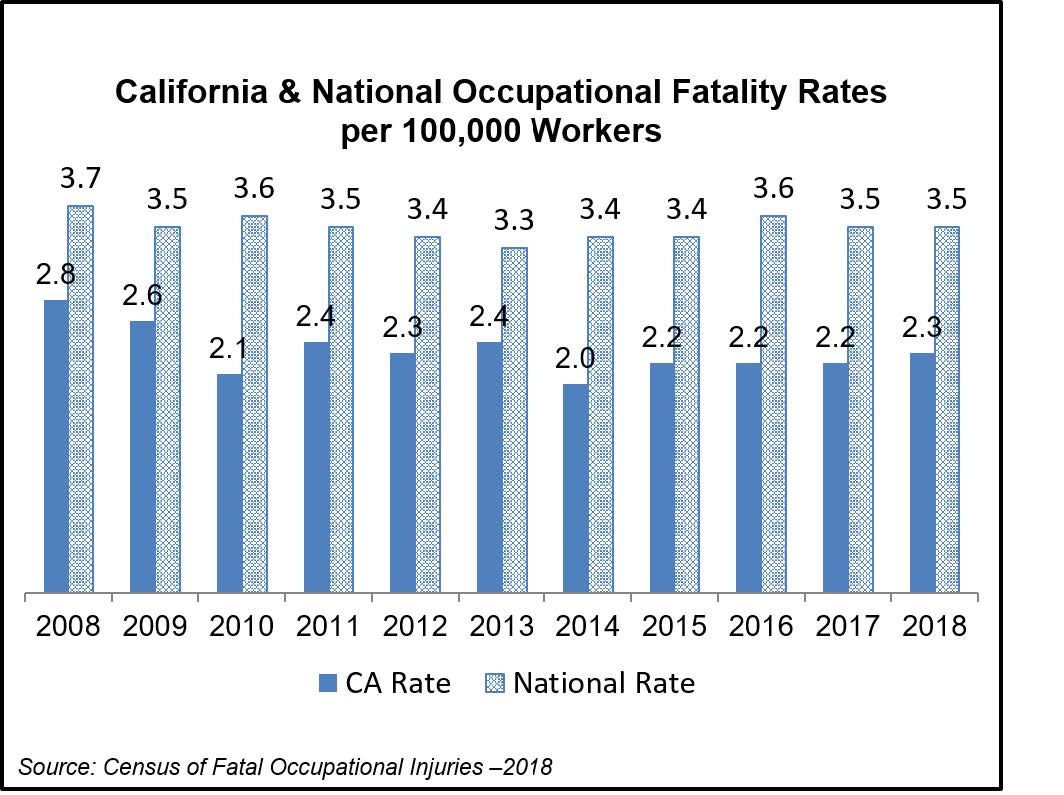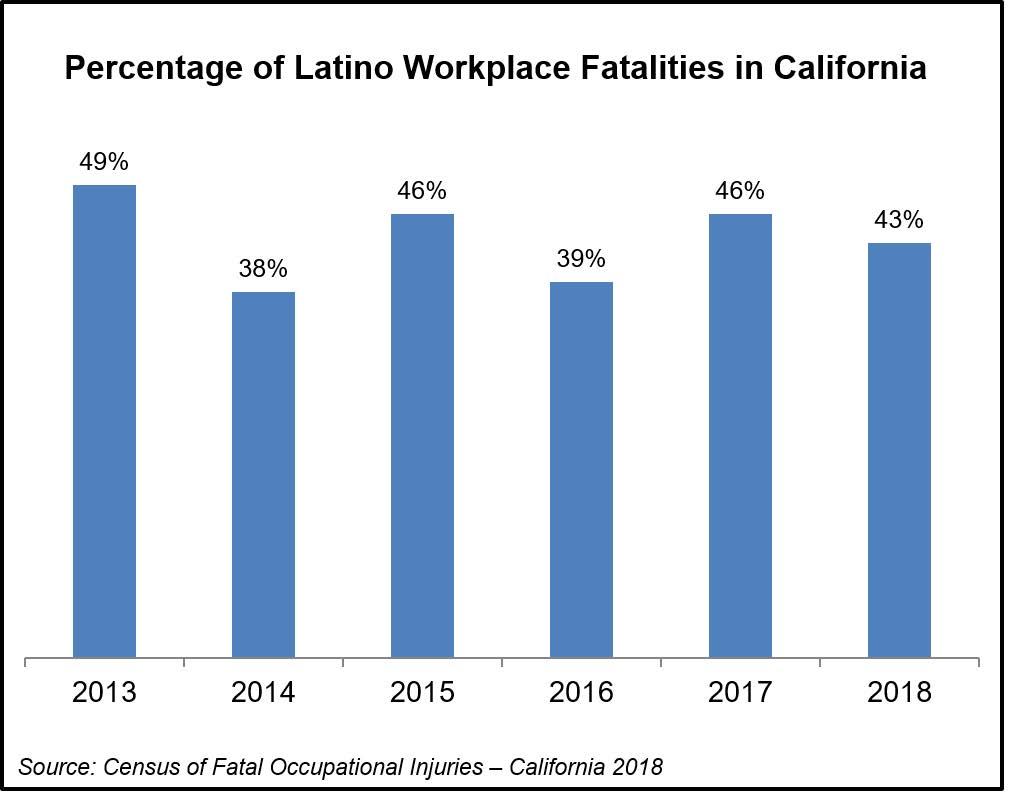

Department of Industrial Relations Reports Increase in 2018 Fatal Workplace Injuries
Oakland—The Department of Industrial Relations (DIR) reports that 422 Californians died on the job in 2018.
 “Every death matters, and these workers who lost their lives on the job in California serve as a reminder that we need to do everything possible to keep workplaces safe,” said Cal/OSHA Chief Douglas Parker. “An increase in workplace fatalities is a serious concern for Cal/OSHA. We are analyzing the data to bolster and direct our enforcement and education efforts.”
“Every death matters, and these workers who lost their lives on the job in California serve as a reminder that we need to do everything possible to keep workplaces safe,” said Cal/OSHA Chief Douglas Parker. “An increase in workplace fatalities is a serious concern for Cal/OSHA. We are analyzing the data to bolster and direct our enforcement and education efforts.”
There were 422 fatal injuries on the job in California in 2018, compared to 376 in 2017 and 2016, 388 in 2015, and 344 in 2014.
 California’s rate of fatal workplace incidents per 100,000 workers remains stable with slight fluctuations since 2008, and has consistently been lower than the national rate.
California’s rate of fatal workplace incidents per 100,000 workers remains stable with slight fluctuations since 2008, and has consistently been lower than the national rate.
The data is from the Census of Fatal Occupational Injuries (CFOI), which is conducted annually in conjunction with the U.S. Bureau of Labor Statistics. Figures for 2018 are the latest numbers available.
 DIR remains committed to its workplace safety outreach and education efforts with a focus on high-hazard work, especially for monolingual non-English-speaking workers. The percentage of Latino deaths reported each year in the CFOI continues to be an area of concern to the department.
DIR remains committed to its workplace safety outreach and education efforts with a focus on high-hazard work, especially for monolingual non-English-speaking workers. The percentage of Latino deaths reported each year in the CFOI continues to be an area of concern to the department.
Tables reflecting final data for 2018 (and prior years’ final data) for California are posted online. For further detail on CFOI methods and calculations see Part III: Census of Fatal Occupational Injuries.
DIR protects and improves the health, safety and economic well-being of over 18 million wage earners, and helps their employers comply with state labor laws. Its Division of Occupational Safety and Health, commonly known as Cal/OSHA, helps protect workers from health and safety hazards on the job in almost every workplace in California. Cal/ OSHA does not generally investigate traffic accidents occurring on public streets or highways that are under the jurisdiction of and investigated by other state and local agencies.
Cal/OSHA’s Consultation Services Branch provides free and voluntary assistance to employers to improve their safety and health programs. Employers should call (800) 963-9424 for assistance from Cal/OSHA Consultation Services. Cal/OSHA has also published a wealth of helpful guides for employers and workers.
Employees with work-related questions or complaints may contact DIR’s Call Center in English or Spanish at 844-LABOR-DIR (844-522-6734). Complaints can also be filed confidentially with Cal/OSHA district offices.
Contact: Erika Monterroza / Peter Melton, Communications@dir.ca.gov, (510) 286-1161
